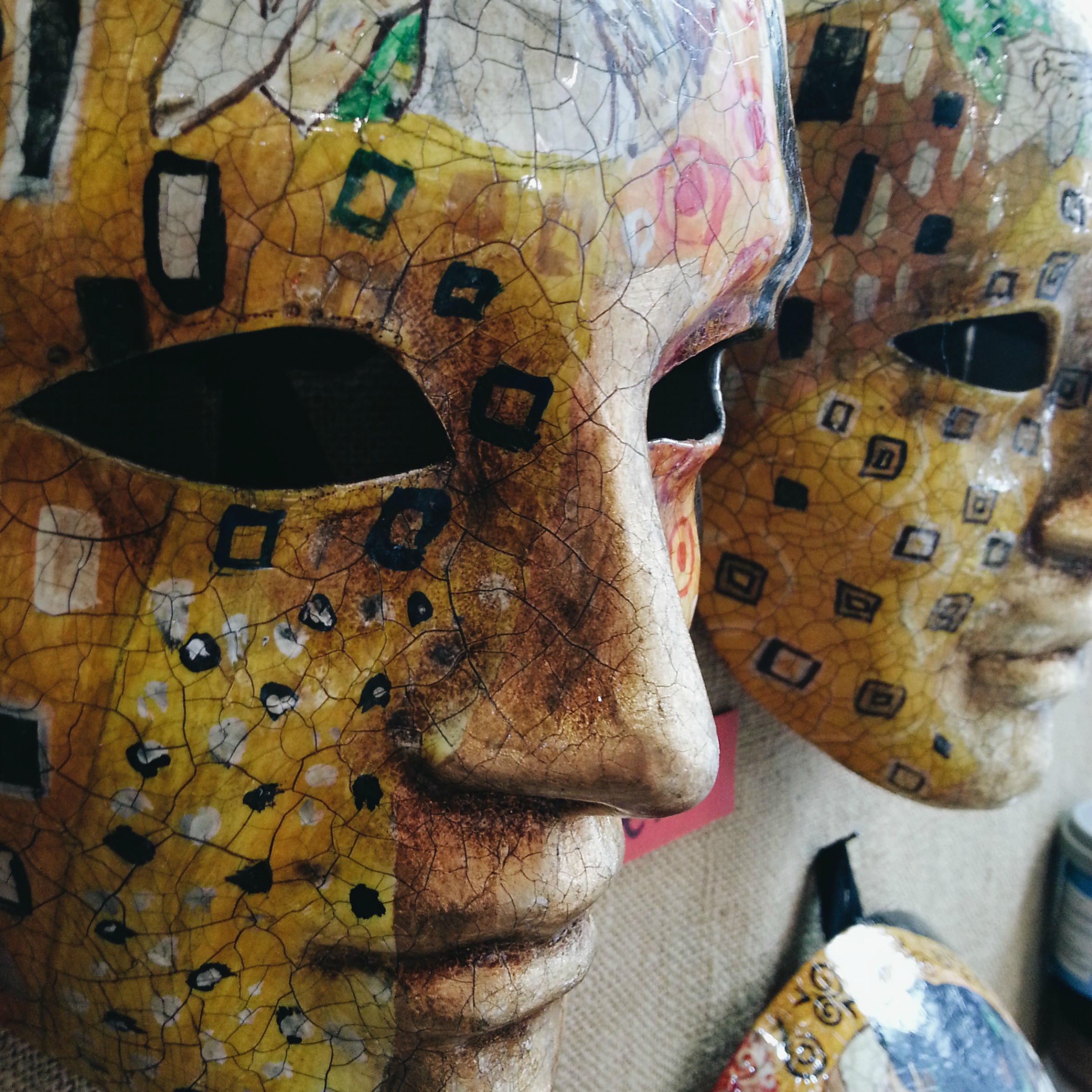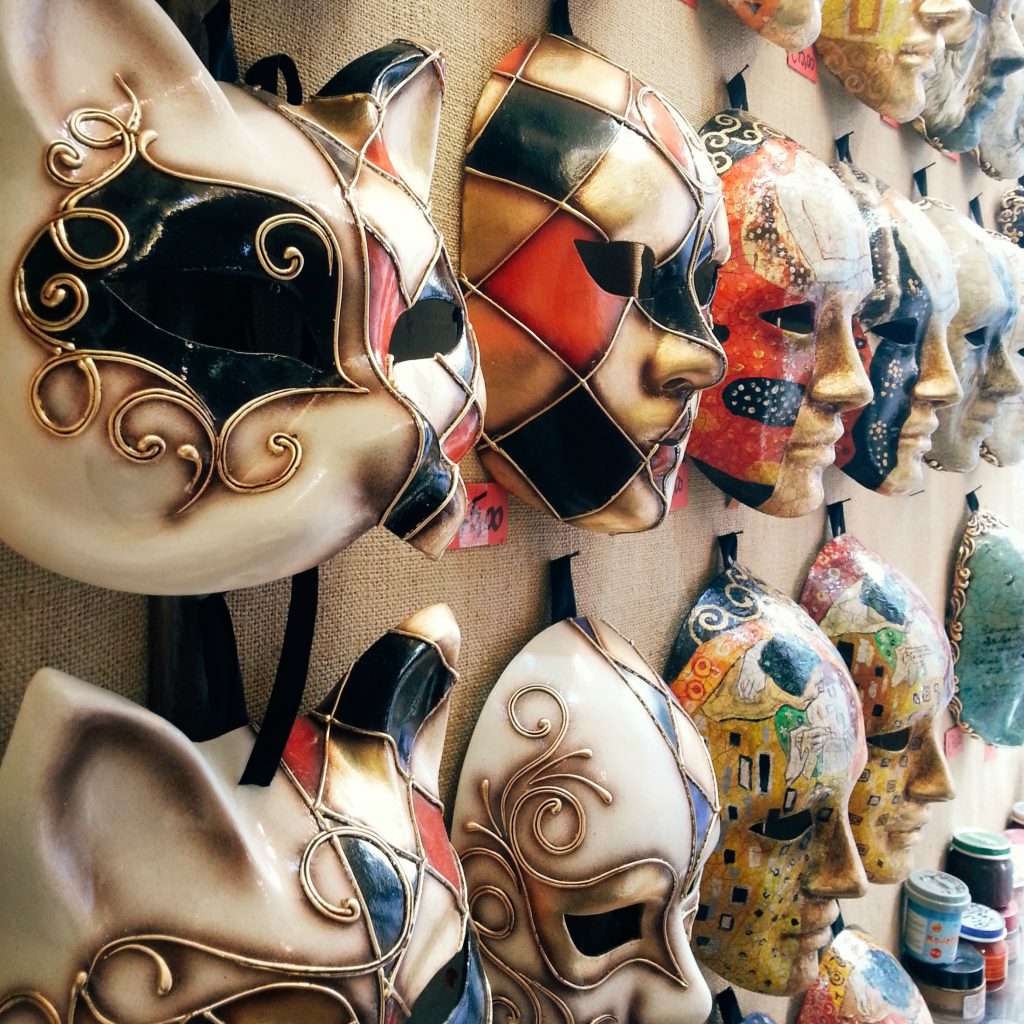
Did you know that when Carnival (or Carnevale) was held during Venice’s Golden Age (about the 18th century), it was much longer than the few weeks it lasts today? Or do you know the significance of the “Plague Doctor” mask? No? Well, if you step into Giancarlo Tamburini’s shop, he’ll tell you all about these stories, and a lot more. With Carnival approaching, we interviewed this funny and enthusiastic artisan about one of the city’s most iconic symbols: the Venice Carnival masks.

Giancarlo’s shop is tucked away from the touristy areas near the big Basilica dei Santi Giovanni e Paolo, but nonetheless his work is well-known, and appreciated by both locals and visitors. He is also one of the last remaining artisans (there are only seven of them) still hand-making masks in papier-maché.
I spent a couple of hours chatting with him, at his work desk by the shop window, and quite often people would stop by just to watch him working his magic. His passion transpires in his masks and, Giancarlo says, is the basic ingredient of all his creations in the shop, made also by his equally talented wife, Erika.
In 2001, they chose to open up this tiny mask shop and revive a traditional job against all odds — and today it is still going strong with people from around the world praising his work. Giancarlo and Erika have followed their passion to build a business, as young locals in love with what they do and with their city of Venice.
You can easily feel that the love Giancarlo has for his masks is equal to the love he has for this city; when I ask him to define Venice in three words, he replies, “Mysterious, fascinating, and gratifying.”

“You can get lost in the alleys of Venice, but you always will end up back home,” he says. “The trick is to relax and enjoy every corner that unfolds in front of you. For sure, St. Mark’s Square and Rialto are beautiful and renowned, but there are plenty of campo, campielli (small squares), and palaces that are worth knowing. Venice is a place full of such history, culture, and beauty that even if you stay here for only one day, you will go home filled with new experiences and knowledge.”
I ask Giancarlo his thoughts on our Urban Adventures motto of #localsknow. What does it mean to him?
“For me, it means a different approach to the city and different way of making you feel and experience Venice,” he says. “In my case, with my clients … I always try to educate them on the differences between my work and other plastic junk stuff you can buy in other stores. You can come in here and watch me work, chat with me, and even create your own mask if you want. I like to show people the real deal, how actual products are made. And be aware, this is not for self-promotion. It is because if you tell people about your hard work and all the passion you put into keeping a tradition like this alive, they will go back home with a more enriching experience to share with their friends, who most likely will come to visit my shop in return. It is not only an item I am selling — it’s an experience, something only someone who is local would be able to give.”
Giancarlo is particularly passionate about this point, as he is a firm believer that there must be changes to the way tourists perceive and interact with Venice — a city that is lived in, day by day, by real people. He doesn’t want it to become a theme park for bored travellers checking off lists.
“I usually [tell travellers] to avoid the crowded and famous places,” he says. “Go instead to Scala del Bovolo, a marvelous piece of architecture hidden behind St. Mark’s Square. They should not be afraid to venture into some small bacaro (tavern). They just need to soak themselves in the Venetian culture that is, of course, food and wine.” Giancarlo laughs. “It is a pity to miss the coloured arguments between old Venetians playing cards in some tiny bacaro.”
Another tip: “I used to work in Murano, hence if a traveller asks for some place ‘out of Venice,’ I usually suggest going there … watch some real good artisans blowing glass, and get lunch at Dalla Mora.”
Before leaving him to his job (Carnival is almost here and he has a ton of work to do) I fired him my last question. “If you had a message for our travellers and readers, which would it be?”
“Please, please do not believe in stereotypes. Do not [think you’re in a] park themed as Venice. This is a real city. Educate yourself; be curious about the city and the actual people living in it. I am sure that you will have a different and more exciting experience if you scratch the gilded surface.”
And as for those facts we mentioned above? In the 1700s, Carnival lasted six weeks, from December 26 to Shrove Tuesday. And the famous mask of the Plague Doctor (Medico della peste) didn’t start out as a Carnival mask, but rather as a protective mask for doctors treating plague victims (the long, hollow beak was so doctors could tuck flowers into the mask and avoid smelling the foul scents of sickness and death). But if you want to hear more of those stories, you’ll have to get them straight from Giancarlo.
If you’re in Venice and want to learn more about masks and how to make them, visit Giancarlo at his shop Artista della Barbaria. Barbaria delle Tole 6360/A Castello-Venice.